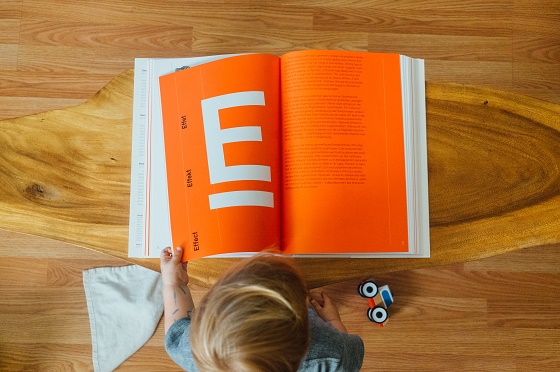Undergraduate student Natalie Tan explores the cognitive benefits of dancing. This post was originally written as part of PB101: Foundations of Psychological Science, a compulsory course on the BSc Psychological and Behavioural Science undergraduate programme at LSE. It has been published with the permission of the author.
Dancing is the physical expression of emotions, almost always accompanied by music. From casually busting a move at a party to ballerinas floating gracefully across a stage, dance has likely had an impact on our lives one way or another. However, have you ever realised that many processes we experience while dancing actually affects us cognitively? Apart from the obvious physical benefits, dance can benefit our cognitive functions without us realising, possibly making us smarter.
It’s all in the brain
Have you ever watched a dance class and wondered how the dancers are able to pick up the choreography in less than an hour? It Is common for anyone learning a dance piece to have to remember the moves and sequence well. This extends beyond just the action itself but also remembering the timing, facial expressions, how it pairs with the music and more. We need to remember how to move while constantly thinking of what to do next. A study found that dancing helped to reduce the risk of developing dementia in elderly, due to the neural synapses being more complex and having an increased cognitive reserve. By constantly building new neural pathways, we are less affected by ageing, which reduces existing pathways. Trying a new style or new move is a way of challenging ourselves and leads to building more of these pathways. Another study found that dancing increases the density of the fornix, the area of the brain linked to our memory, which leads to increased ability for processing information. With better memory and increased brain function, all of us can benefit by retaining knowledge more easily in our learning as well.
The two types of thinking
Peter Lovatt is known as ‘Dr Dance’ with his research into psychology and dance. He found that the type of dance we do can lead to improvements in two different types of thinking. The first being convergent thinking, where one would use different pieces of information to draw a single conclusion. The second type, divergent thinking, refers to creating many possible solutions to a single question. When participants were instructed to do 20 minutes of structured dancing, they performed better on tasks that required convergent thinking. Meanwhile, 20 minutes of improvised dancing led to better performance on tasks requiring divergent thinking. This is because in each condition, the brain became wired to think in either way. A structured dance only allows for one correct next action, and we end up thinking in a specific sequence whereas we are not restricted in an improvised dance and anything is possible, giving us freedom over how we think. There is no better way of thinking out of the two but rather, we all learn differently. Dance, therefore, improves our thought agility and makes it easier to grasp new concepts and understand new knowledge.
Intelligence and creativity with dance
A common challenge many dancers face is when they are required to freestyle. Whenever a dance instructor incorporates freestyle elements into a routine, many dancers tend to freeze up. They are, literally, put on the spot. While it comes more naturally to some rather than others, it is no easy feat. Freestyle requires you to think on the spot, understand the music and be creative, all at the same time. By exploring different ways to express ourselves, we can better understand our bodies and how we dance. Applying this same creative thinking to an academic context, we find ourselves more comfortable to think outside the box and expand on what we already know, for a deeper understanding in learning. The dictionary defines intelligence as being able to acquire and apply knowledge, meaning deciding what information is important to retain and when or how to use it. When dancing on the dance floor, you do not have time to stop and think of what move you should do. Well, you could but you would end up looking out of place. Instead, we undergo quick decision-making with every step, referring to our collection of moves and picking the most suitable one, all within a few seconds. Similarly for choreographers, they undergo countless complex decision-making processes that extend beyond what moves to repeat or change. Now, think of these same processes but when completing a math question. We read the question, pick the best method to solve it based on our pre-acquired knowledge, and eventually find the answer. Dancing freely allows us to undergo this process which is transferable to the academic context, providing a ‘practice’ so we can better perform when using our knowledge.
Are you smarter than a dancer?
There are many cognitive processes we undergo in dance that can benefit us academically, making us ‘smarter’. This does not mean you should decide not to study for an exam and expect that the macarena will help you ace it. Instead, dance provides long term benefits that contribute towards maintaining mental acuity and the best part is that all of such benefits are easily attainable. So, why not take a few minutes of your day to freestyle and dance around your room? You never know how much you could be helping your brain!
Notes:
- This post expresses the views of the author and not the Department of Psychological and Behavioural Science nor LSE.
- This post was originally written as part of PB101: Foundations of Psychological Science, a compulsory course on the BSc Psychological and Behavioural Science undergraduate programme. The post has been published with the author’s permission.
Bibliography:
Tucker, Ian. “Peter Lovatt: ‘Dancing Can Change the Way You Think.’” The Guardian, The Guardian, 30 July 2011, www.theguardian.com/technology/2011/jul/31/peter-lovatt-dance-problem-solving. Accessed 5 Nov. 2021.
Powers, Richard. “Dancing Makes You Smarter.” Stanford.edu, 2010, socialdance.stanford.edu/syllabi/smarter.htm. Accessed 6 Nov. 2021.
Lovatt, Peter. DANCE CURE : The Surprising Secret to Being Smarter, Stronger, Happier. 2020. S.L., Harper One, 2021.
Kaufmann, Karen, and Jordan Dehline. “Dance Integration: 36 Dance Lesson Plans for Science and Mathematics.” Journal of Dance Education, vol. 15, no. 2, 3 Apr. 2015, pp. 82–82, 10.1080/15290824.2014.995459. Accessed 6 Nov. 2021.
“Artis | the Brain and Improvisation: Getting into the Groove for Convergent and Divergent Thinking.” Www.artisfoundation.org.uk, 20 June 2013, www.artisfoundation.org.uk/blog/blogposts/2013/06/the-brain-and-improvisation-getting-into-the-groove-for-convergent-and-divergent-thinking/. Accessed 6 Nov. 2021.
Verghese, Joe, et al. “Leisure Activities and the Risk of Dementia in the Elderly.” The New England Journal of Medicine, vol. 348, no. 25, 2003, pp. 2508–16, www.ncbi.nlm.nih.gov/pubmed/12815136, 10.1056/NEJMoa022252. Accessed 5 Nov. 2021.
Basso, Julia C. “Dancing Can Reverse Aging in the Brain» ForeverFitScience.” ForeverFitScience, 13 Oct. 2017, foreverfitscience.com/brain-health/dancing-can-reverse-aging-brain/. Accessed 9 Dec. 2021.
Fonseca, Ana R., et al. “Decision‐Making in a Choreographic Creative Process: A Quantitative Approach.” The Journal of Creative Behavior, vol. 55, no. 2, 17 July 2020, pp. 433–446, 10.1002/jocb.464. Accessed 9 Dec. 2021.





This is excellent! I’ll be heading off to a dance-off with dementia!
How fun! Natalie must be a genius by now, haha!
Great read!
Wow, who would have thought?